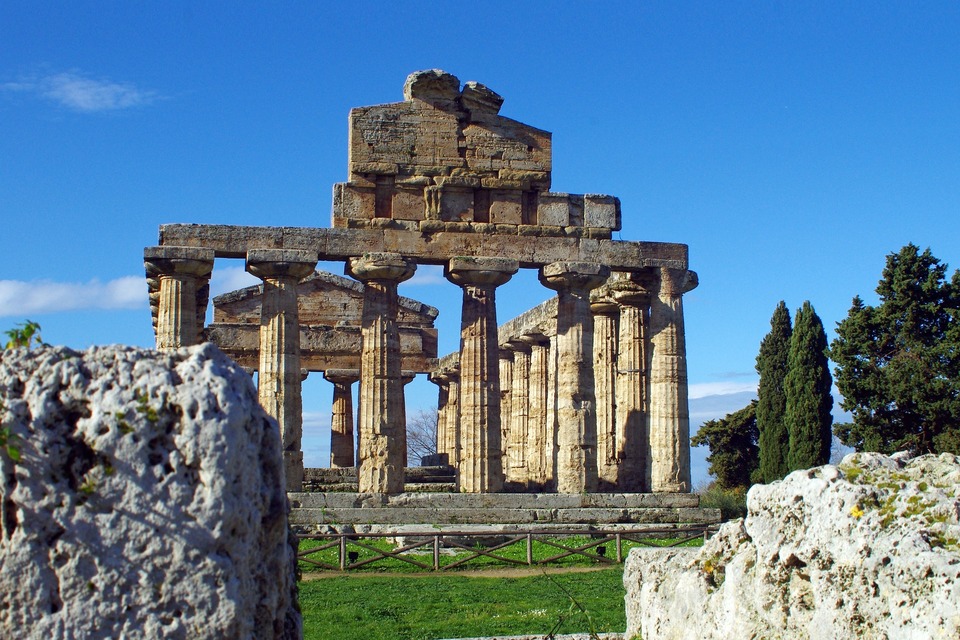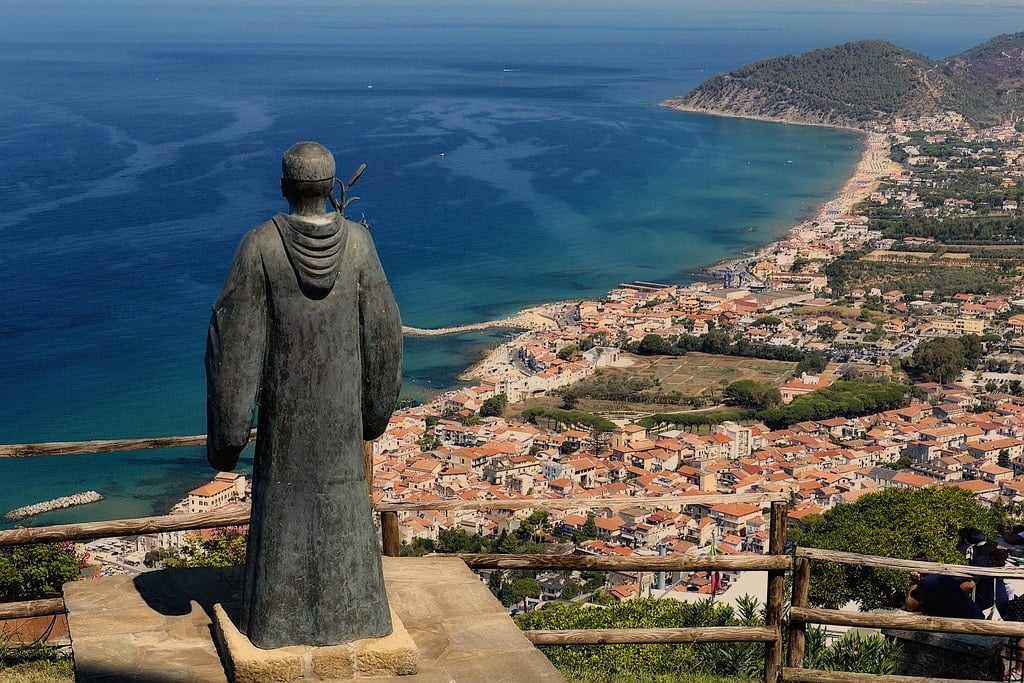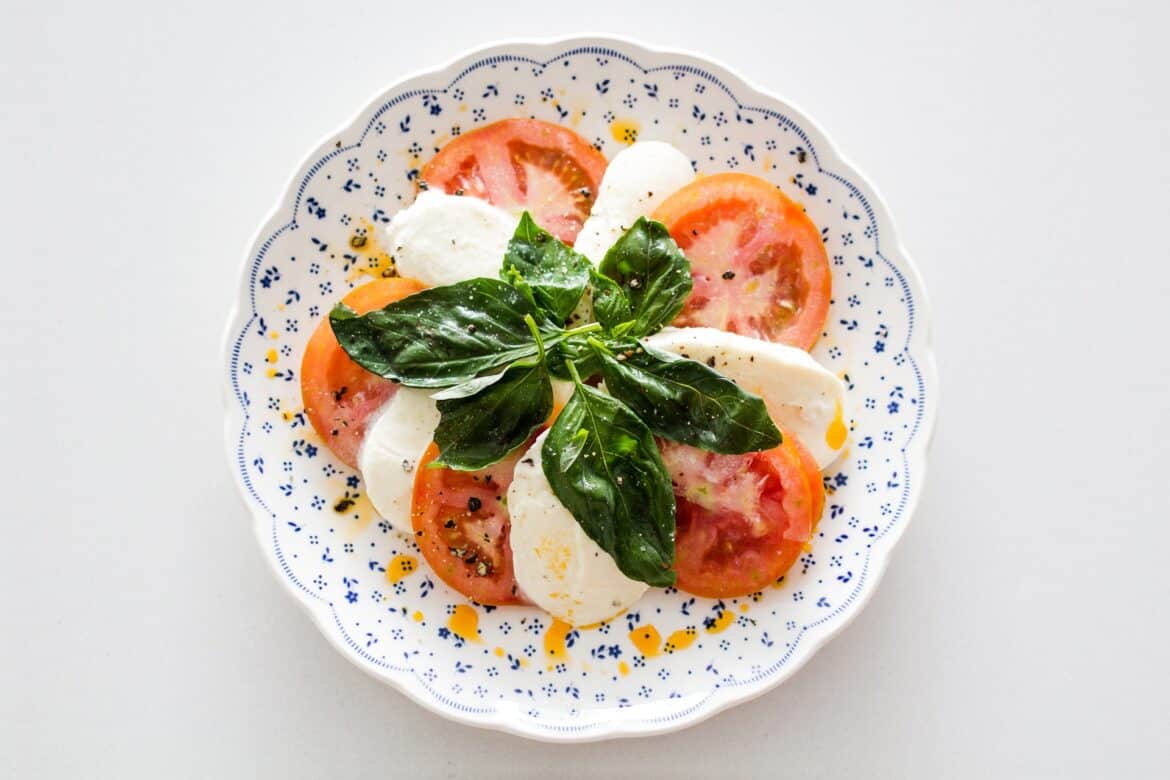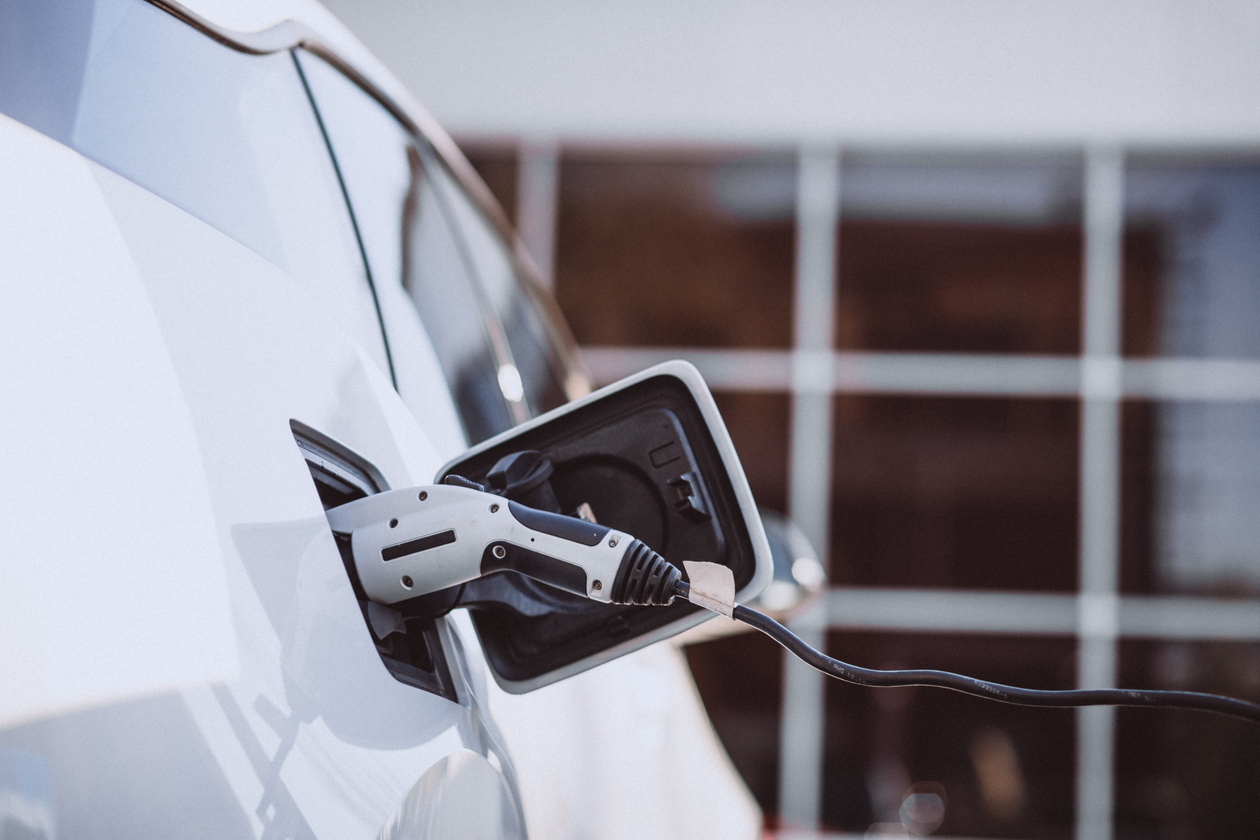One part of Campania that is less visited than its other areas is the Cilento coast. It’s a wonderful area that deserves to be discovered because – and I can guarantee this – it has great surprises in store for you. It’s the ideal destination for anyone who loves fine food and wine (try all the typical Cilento dishes, starting with lagane e ceci (lagane pasta with chickpeas), but also for lovers of history and antiquity (the remains of ancient Magna Graecia are here), and for those who enjoy long walks in attractive towns and in nature. In fact, on the Cilento coast, you can find art, history, nature and great cooking.
All of this is enhanced by the warm hospitality of the Cilento people. So, we’re suggesting our route for a long weekend on the Cilento coast, a fantastic road trip to enjoy in an electric car. We set off for Salerno for a stop at nearby Baronissi to charge the car at one of the Plenitude + Be Charge charging points, before continuing to the other areas.
Day 1: the charm of antiquity: Paestum and Agropoli
Paestum
The first leg of our trip is Paestum, formerly named by the Greeks as Poseidonia, the jewel of Magna Graecia. It’s worth planning a weekend on the Cilento coast just to see Paestum, because this archaeological site is imposing and breath-taking. When you arrive here, in sight of the temples of Hera, Athena and Poseidon, you’re literally catapulted into the past.
A sensation that becomes indescribable emotion. Paestum’s majesty lies in the fact that it’s located on a limestone plateau that enables the entire city to be elevated above everything else. What amazes you about Paestum is that – in contrast to other important archaeological sites – it still preserves its authenticity and it’s enveloped in a sacred, unique, atmosphere.
Before leaving Paestum, we can’t miss out on a visit to the Paestum branch of the National Museum of Archaeology, which houses ancient finds of great value found in the Paestum area, rather, from Ancient Poseidonia.
One of these is a find that we’ve read and re-read about in school: the Tomb of the Diver, dating to 480 BC. With its beauty still fresh in our minds, we leave Paestum and head for Agropoli for lunch.

Agropoli
Located in the Cilento National Park, Agropoli is not to be missed thanks to its historic, architectural and cultural heritage. Its cookery is another reason to visit, so much so that we immediately stopped at the U’ Sghiz restaurant to try some of the Cilento’s typical dishes, beginning with the acclaimed lagane e ceci (lagane pasta with chickpeas).
This dish is made with lagane – a wide pasta shape made fresh with durum wheat flour and water – that is cooked with stewed chickpeas and served with tomatoes. Ingredients that go well together, giving life to a dish whose creaminess amazed me! To think that this is a dish that began life as one cooked by the poorest in Italy, yet it’s extremely rich in flavour!
After lunch we give in to the beauty of Agropoli, a city that overlooks the sea. In fact, its name derives from Greek and means ‘high city’, because of its special position. We have a look round the old town, climbing the Salita degli Scaloni steps until we got to the Porta Monumentale and the Angevin-Aragonese castle.
Later in the afternoon, we relaxed on San Marco seafront. The beach of the same name has received multiple ‘Blue Flag’ awards for the clarity of its waters. We stopped at Agropoli for the night, before setting off the next day for Torchiara.

Day 2: a day of towns and seafronts, Torchiara and Castellabate
Torchiara
Also known as ‘tower town’, Torchiara is a quiet town from another time that’s known – unsurprisingly – for its towers. It’s surrounded by immense stretches of countryside and has a ‘high’ part and ‘low’ part of town. In fact, it dominates the gulf at Agropoli. We added this town to the itinerary because going to Torchiara allows you to better understand the extent to which the Cilento coast is made up of marvellous seaside towns, but also enchanting inland towns that are just as spectacular.
The centre of Torchiara’s medieval appearance, with its narrow streets and small houses, gives visitors a fascinating insight into its history, which we explored with amazement.
The interesting sites to see in the old town include: the distinctive Church of San Salvatore (dating back to 1100), the medieval churches of Madonna of the Graces and San Bernardino, the Mangone Tower (from the 18th century, constructed as a defensive structure to control the territory), and the old palazzos built for nobility, like the Palazzo Riccio and the Palazzo Baronale de Conciliis. At this point we start to get hungry and so we decide to move on to Castellabate for lunch.
Castellabate
As we arrive in Castellabate, before going on to discover this city that has become famous in the last few years, we stop for lunch in a traditional trattoria to sample yet more typical Cilento dishes. This time we chose scialatielli alla cilentana, a Cilento dish prepared with fresh pasta, dried tomatoes, capers, anchovies and breadcrumbs.
As you can guess, we fell further in love with this speciality with every mouthful. We then had coffee, turning down the offer of dessert, and proceeded with our discovery of Castellabate, one of the destinations we most looked forward to visiting during this trip.
Castellabate has a place on the list of the Borghi Più Belli d’Italia and is also a UNESCO world heritage site. The reason for all this recognition is simple: Castellabate will take your breath away. This is one of those places that gives you a real, genuine flavour of the south of Italy, so much so that the film Benvenuti al Sud (Welcome to the South) was shot here. The film features a famous line: ‘When a stranger comes to the South, he cries twice. When he arrives and when he leaves’.
Castellabate only has 8,000 inhabitants, which is why it still has an intimate atmosphere that you notice when walking in its maze of tortuous back streets, which, suddenly, reveal views of the rocky promontory. A promontory set into the bluest of seas and surrounded by Mediterranean maquis.
The first place we wanted to see is the panoramic terrace, which gives you unrivalled views of the gulf. From here you just need to dive back into the labyrinth of back streets to reach the major points of interest, starting with the celebrated square that plays a central part in Benvenuti al Sud. What amazed us is that in this town, everything is organised as if it was in a film from another time. Castellabate is a real delight and we’re happy to stay here overnight, so we can enjoy this view again the morning after, over breakfast.

Day 3: in search of Hemingway and the Cilento coast’s gastronomic delights, from Acciaroli to Paestum
Acciaroli
We can’t leave the Cilento coast without seeing one of its pearls: Acciaroli. So, we decided to spend Sunday morning in this picturesque area with its multi-coloured houses and vibrant moored boats. Acciaroli is a seaside town and a fishing town, so much so that it’s always been said that it inspired Hemingway when he wrote his novel The Old Man and the Sea.
This is why for a long time there has been a real rivalry between this part of the Cilento coast and Key West, in Florida (which always boasts that it inspired Hemingway to write his novel), which – thanks to the great writer – is now a tourist destination known throughout the world. We don’t know what’s true, but we’re sure that Acciaroli is marvellous and should be visited anyway. We also took the opportunity to spend some time chatting with the fishermen and to enjoy the coast’s divine side: the sea.
The temple of buffalo mozzarella
Returning to Paestum, we decide to stop in this excellent Cilento gastronomic palace: Tenuta Vannulo. Here, there is a dairy where it’s possible to sample and acquire one of the best ever buffalo mozzarellas – according to the people from the area. The property also contains a bar and restaurant where you can taste sweet and savoury specialities based on the buffalo mozzarella made here. We stop here to taste one of the greatest Cilento specialities in all its various interpretations before – alas – returning home.
At this point we charge our car at the Plenitude + Be Charge charging point at Montecorvino Rovella before returning to Salerno and concluding our weekend with an excellent Campanian pizza (which is never a bad thing) and a walk along the marvellous Salernitano seafront at sunset.

Article by Manuela Vitulli








